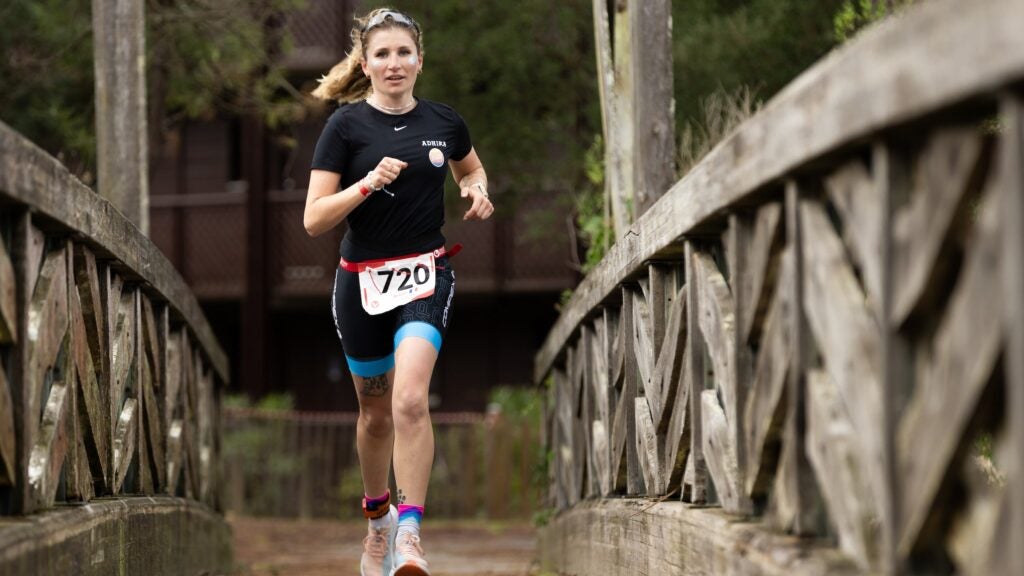Understanding Running-Related Injuries in Triathlon Training
Consistency is often hailed as the cornerstone of successful triathlon training. However, for many athletes, this very consistency can lead to injuries such as IT band syndrome, shin splints, and stress fractures. These injuries can arise unexpectedly, jeopardizing months of preparation and timing, particularly leading up to races. But recent research sheds light on how improper running form and shoe choice can be major contributors, leaving many unaware that they may need to reassess their approach.
Research conducted at the University of Florida reveals critical insights into running mechanics among triathletes. The study, detailed in the journal Frontiers in Sports and Active Living, involved an assessment of 710 runners to evaluate the correlation between their foot strike patterns and injury rates. Participants were categorized into heel strikers, non-heel strikers, and those unsure of their foot strike method. Utilizing advanced slow-motion technology, researchers meticulously analyzed each runner’s gait and history of injuries.
The findings highlighted a significant gap in knowledge among those who were uncertain about their gait pattern. Runners who lacked awareness of their foot strike were found to be at the greatest risk for sustaining injuries. The study suggests that the type of footwear worn, specifically shoes with a high heel-to-toe drop, plays a pivotal role in this lack of awareness. The higher the drop and weight of the shoe, the more disengaged a runner becomes from the natural mechanics of their foot strike, increasing the likelihood of injury.
Shoe Selection: A Key Factor in Injury Prevention
With footwear potentially affecting injury risk, the question arises: how should athletes select their running shoes? The evidence points to opting for shoes with a lower heel-to-toe drop and reduced weight. Such shoes can foster a more natural interaction with the ground, heightening awareness during pivotal phases of running, including impact, loading, and propulsion. A foot that maintains contact with the ground can better adapt to forces, ultimately leading to more efficient running mechanics.
Moreover, excessive heel-to-toe drops can inadvertently alter how impact forces are dispersed across the body, as highlighted by a recent study on joint stress. Those using high-drop shoes often exert undue stress on their knee joints—specifically the patellofemoral area. Conversely, choosing shoes with a milder drop (around 4-6mm) can lead to a more optimal distribution of forces, enhancing overall running form and reducing specific joint stressors.
Individuals currently experiencing injuries related to high heel-toe drop shoes might find it beneficial to gradually transition to more minimalistic footwear. It’s essential to approach this switch cautiously; a suggested strategy involves using new shoes for one or two runs per week and progressively increasing usage over four to five weeks. This gradual adjustment allows the body ample time to adapt to the differing demands of the new shoe design.
The Importance of Body Awareness During Runs
Beyond the role of footwear, the research stresses the importance of self-awareness while running. Understanding how one’s body moves and interacts with the ground is essential for reducing injury risk. Awareness can sometimes take a backseat when athletes indulge in distractions such as music or podcasts. Integrating moments of focused attention on running form can counteract this by helping runners recognize and correct potential mechanical inefficiencies.
One practical approach to enhance body awareness is to run in front of a mirror on a treadmill, allowing the athlete to observe their running form in real time. This immediate feedback can be invaluable, especially as fatigue sets in. Unlike external encouragement from spectators, a mirror offers unfiltered insight into one’s mechanics, helping to identify areas needing improvement.
Improving running form not only decreases injury likelihood but also fosters stronger movement patterns that enhance overall performance. As athletes refine their technique and footwear choices, they may reap the benefits of improved efficiency and potentially arrive at the finish line looking and feeling strong.
